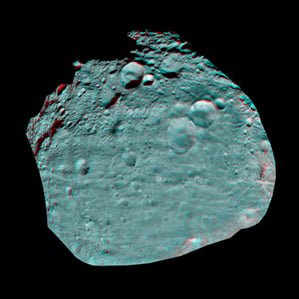Why Would Anyone Want to Mine Asteroids?
Platinum and other metals such as rhodium and iridium are rare in the Earth’s crust, but they’re commonly used in everyday objects like catalytic converters, jewelry, and computer hard disks. These materials are so expensive that one company thinks it could be economical to send spacecraft to retrieve them from asteroids. But that’s not the only reason to mine these space rocks. They also contain water and metals like nickel and cobalt that could be used in settlements in space. Here’s how it might work.

Potential benefits
The two companies that appear most serious about mining asteroids are U.S.-based Deep Space Industries and Planetary Resources. Both are interested in harvesting water and metals for activities in space; the latter company is also exploring ways to bring asteroids’ precious metals back to Earth.
The companies’ first goal is to extract water from asteroids by heating up their rocks and dust. Planetary Resources president Chris Lewicki says water from asteroids could sustain people living in space for long periods of time and be used to fill radiation shields inside spacecraft. It costs about $50 million to send a single ton of water beyond Earth’s orbit, he estimates, and getting it from asteroids could be cheaper.
Deep Space Industries’ vice chair David Gump says that there are also more immediate uses for asteroid materials. The water found on asteroids could be used to extend the life of communications satellites. The propellant that keeps satellites in their orbits today typically contains nitrogen, which is scarce on asteroids. But new vehicles with water-based thrusters could attach to the satellites to keep them running for far longer than they normally would.
The two companies are also interested in manufacturing components in space in a way that’s cheaper than launching materials from Earth. Anything sent up from here increases the weight of a rocket, which means higher fuel costs. But by harvesting iron, nickel, and cobalt from asteroids, commercial space companies might assemble certain support structures for space stations for less money. Deep Space Industries says it also wants to manufacture solar panels or long antennas in space since such large equipment is hard to fit inside a rocket.
Finding the asteroids
Before these companies can mine asteroids, they’ll have to make sure that the rocks contain a lucrative mix of minerals. They’ll do this by sending small spacecraft near an asteroid’s surface to analyze its composition with lasers, radar, infrared cameras, and other sensors.
Planetary Resources plans to launch two early satellites this year. They will not go all the way to the asteroids, but will provide information on how their instruments function. Lewicki expects the first surveying vehicles to begin the journey toward asteroids in the next three years.
Deep Space Industries is working on a briefcase-sized vehicle that could start a one-way surveying mission in the next three to five years, provided the company can raise the $5 million to $20 million cost per vehicle. A later version would bring back samples weighing five to 10 kilograms.
More research
NASA has identified more than 12,000 asteroids within about 45 million kilometers of our planet, but most of them have not been studied up close. Scientific missions to bring back asteroid samples to Earth are underway, although their goal isn’t to find mining targets but to learn more about the origins of the solar system. The Japanese recovered the first sample in 2010 and launched a follow-up mission in December 2014 that will arrive at the asteroid in 2018. NASA’s Osiris REx mission, set for launch in September 2016, will be the first U.S. mission to bring asteroid samples back to Earth from the carbon-rich asteroid Bennu.
The Takeaway:
If all goes well, asteroid mining could start in the 2020s. However, mining companies first must do a lot of work to survey asteroids and build vehicles capable of harvesting the materials. The biggest challenge will be raising enough money to work through the technical challenges, says Mason Peck, an associate professor at Cornell University and former NASA chief technologist. It is unclear if any companies have raised enough capital, he says, even though the companies have gotten financial support from Silicon Valley investors such as Larry Page and Eric Schmidt. Deep Space Industries says it hopes to secure some funding from commercial space companies within the next year.
Do you have a big question? Send suggestions to questionoftheweek@technologyreview.com.
Keep Reading
Most Popular
Large language models can do jaw-dropping things. But nobody knows exactly why.
And that's a problem. Figuring it out is one of the biggest scientific puzzles of our time and a crucial step towards controlling more powerful future models.
How scientists traced a mysterious covid case back to six toilets
When wastewater surveillance turns into a hunt for a single infected individual, the ethics get tricky.
The problem with plug-in hybrids? Their drivers.
Plug-in hybrids are often sold as a transition to EVs, but new data from Europe shows we’re still underestimating the emissions they produce.
Stay connected
Get the latest updates from
MIT Technology Review
Discover special offers, top stories, upcoming events, and more.